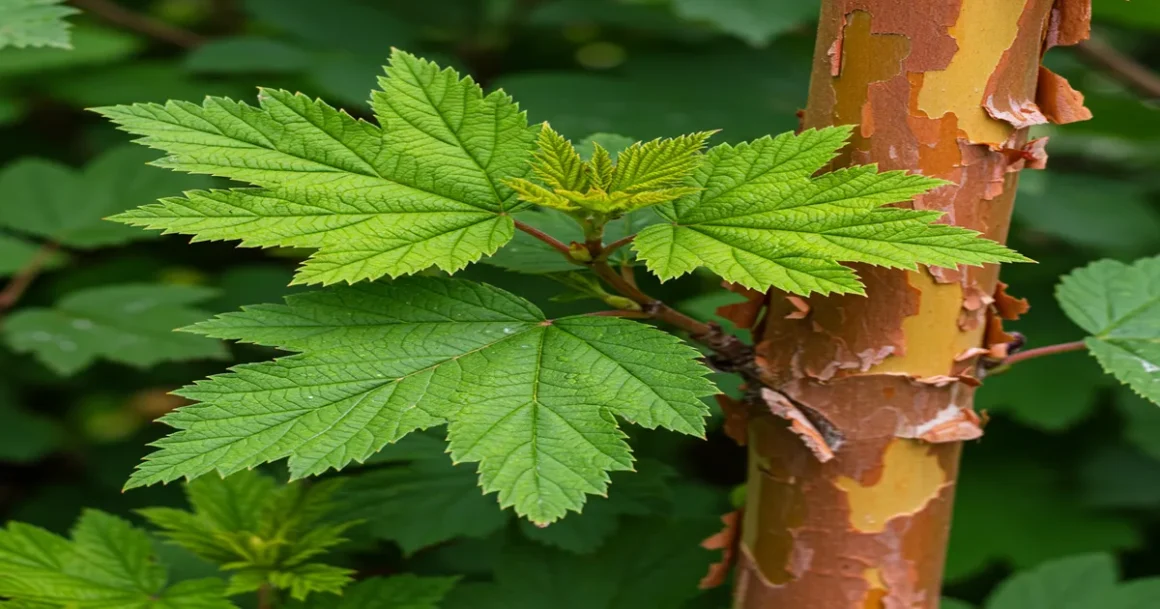Amber Jubilee ninebark is a unique cultivar of Physocarpus opulifolius, also known as ‘Jefam’ AMBER JUBILEE. This shrub offers all-season interest with its foliage changing colors from spring to fall and its attractive textured bark visible after leaf drop. The great advantage of this cultivar is its easy overall care, making it ideal for property owners looking for low-maintenance gardening with a wow factor. The Amber Jubilee ninebark is a distinctive option for those seeking a shrub that provides four-season interest, not commonly found in many gardens.
Varieties of Amber Jubilee Ninebark
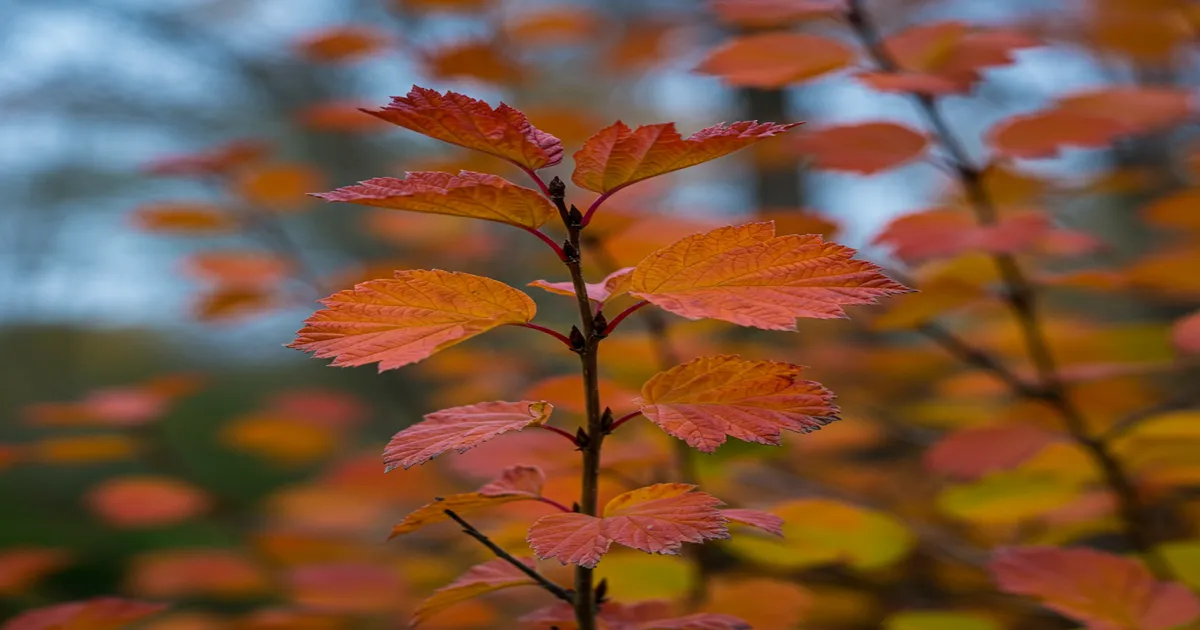
‘Jefam’ AMBER JUBILEE is a specific type of the plant Physocarpus opulifolius, so you won’t find any other varieties of ‘Jefam’ AMBER JUBILEE ninebark. While there are other varieties of ninebarks available, they will have significantly different characteristics from this particular cultivar.
The name Amber Jubilee, under which it is patented, is derived from the color of its leaves and the year 2012 when it was patented, coinciding with Queen Elizabeth II’s Diamond Jubilee.
Trimming
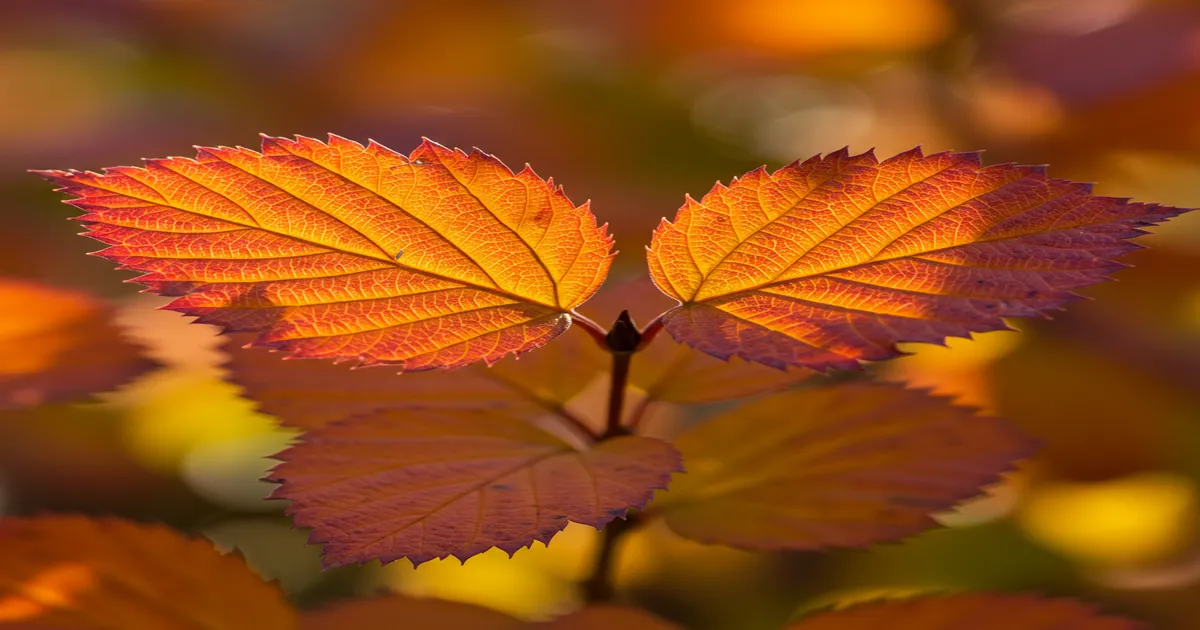
The most effective way to maintain your Amber Jubilee ninebark is by allowing it to grow in its natural form. This implies that you won’t need to trim it extensively, although some trimming may be necessary. Depending on your desired size, you can trim annually to promote flower growth and control the shrub’s size, or trim every three to five years to revitalize the shrub, stimulate new growth, new leaves, and more attractive branches.
If you opt for rejuvenating pruning every three to five years, the ninebark should be pruned near the ground in the winter. If you are trimming for size annually, the ideal time is right after the last flowers fade but not too late in the summer. Trimming at the wrong time can impede your plant’s growth.
Growing Amber Jubilee Ninebark from Cuttings
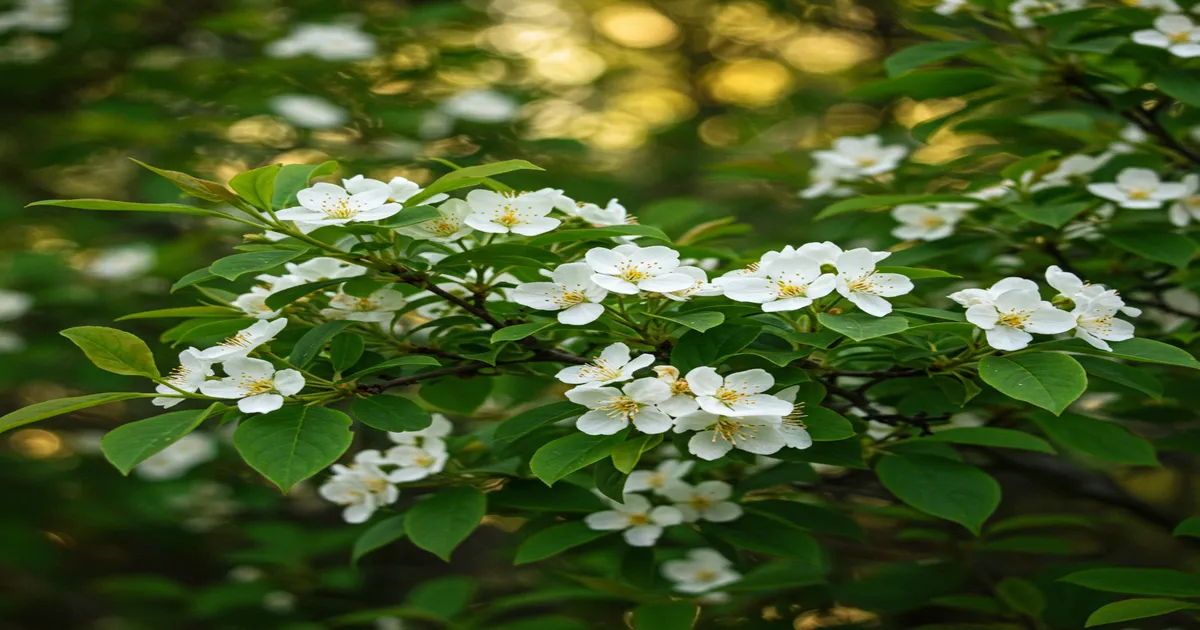
This particular variety is protected by a patent, which indicates that you are not permitted to propagate it without the appropriate authorization.
Instructions for Propagating Amber Jubilee Ninebark from Seed

It is against the law to cultivate Amber Jubilee ninebark from seed because it is a patented variety.
Surviving the Winter
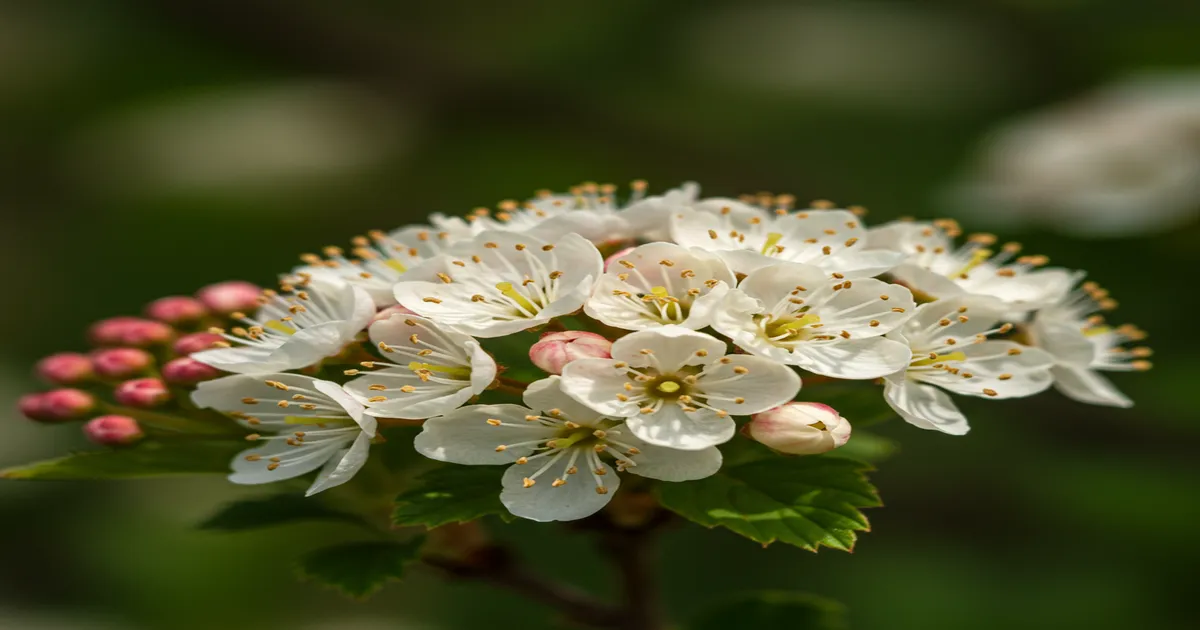
Amber Jubilee Ninebark doesn’t need extensive attention during the winter season. Nevertheless, it’s advisable to inspect for any harm caused by animals and trim the plant close to the ground in colder weather. Being a deciduous perennial shrub, numerous varieties of ninebark shed their leaves and go dormant in winter.
Common Pests & Plant Diseases
The Amber Jubilee ninebark is not bothered by many pests, making it a great choice for landscaping projects. However, it can be affected by a few common diseases, but they are generally manageable.
Fire blight, caused by the bacterium Erwinia amylovora, is a common disease that can affect all ninebarks. Symptoms include winter cankers, bacterial oozing, waterlogged-looking foliage in spring that turns black and dies off. Fire blight can be controlled by pruning infected areas and avoiding high nitrogen fertilizer.
Another common issue is powdery mildew, which can be easily prevented and treated. If your shrub’s leaves appear dusted with baby powder, it may be infected with this fungal disease. Planting the shrub in a sunny area, avoiding overwatering, and keeping gardening tools clean can help prevent powdery mildew. If the plant does get infected, fungicides can slow its spread after removing infected parts and disposing of them properly. It is crucial to clean tools with bleach to prevent the fungus from spreading to other plants.
FAQ
How long do ninebarks live?
Both the Amber Jubilee and other ninebarks are known for their longevity, living up to 100 years easily.
How fast does Amber Jubilee Ninebark grow?
Ninebarks typically have a fast growth rate of around 15 inches per year, although this can vary based on growing conditions.
Why is it called called ninebark?
The name “ninebark” comes from the shrub’s distinctive feature of having peeling bark.

